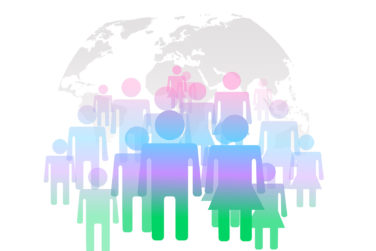“Big data” is the latest buzzword in the consumer and life sciences industries. In today’s complex communications environment, we are awash in incoming data from a variety of sources. The quickly expanding and evolving omni-channel global engagement environment lends itself to gathering data from every corner, and developing a way to use this data for actionable insights is critical.
In my role overseeing global customer experiences for well-known consumer brands, I see the tremendous opportunity available thanks to big data, not only within the consumer packaged goods (CPG) industry but also pharmaceutical and life sciences engagement. The strides made in CPG can most certainly be applied to pharma, and the lessons learned become especially relevant in today’s patient-empowered culture. With the growing expectation to meet consumers and patients in their preferred channels of choice, there’s more data than ever before across channels—and omni-channel engagement provides tremendous opportunity to improve patient programs as well as products.
Whether it is CPG or pharma, the question is not why this data is important, but determining how to leverage this data as a company asset. From data, we can make better business decisions. But how can it be used synergistically to drive value?
For starters, it means making data more manageable and efficient. It may seem obvious, but that process is one that should be carefully considered and crafted.
Bringing Structure to an Unstructured Environment
There are four basic steps to data analytics: (1) collecting the data from data sources, (2) processing the data through an intelligent platform, (3) analyzing the data, and (4) delivering the data analytics.
Let’s take a closer look at Step 2, a crucial one. Consider the example of a medication engagement program, in which contact center agents or health nurse coaches are receiving calls and handling text messages with patients about medication program adherence or product inquiries, participating in online chats or email conversations, and monitoring social media or engaging with users on social media about a particular medication.
If, during Step 2, there is a way to convert all that data to make it more structured from its unstructured raw form (Step 1), synergy can occur, and data analysis and delivery (Steps 3 and 4) can be much more useful and valuable.
New intelligent platforms work hand-in-hand with the human element. When you combine voice-to-text transcription, categorization, and machine-learning technology to uncover signals, trends, and indicators, the integrity of all your data can be improved.
The Value of Voice Analytics
Processing all phone calls via voice transcription and speech analytics solutions can improve the integrity of your data—and, at a broader level, future interaction experiences—by capturing topics of conversations, nuances of customer behaviors, agent communication and any gaps in knowledge.
Audio and video recordings can be converted into searchable text that can be viewed alongside email, social, and chat messages for a big-picture view of your data. This can be done in batches (overnight) or near real-time (during or immediately following the interaction).When combined with all other structured interaction data, the result is a 360-view, allowing for true data that offers actionable insights and improves contact center efficiency.
Automated Reason Codes
Today’s data analysts have developed proprietary models to filter and classify unstructured data into categorical reasons, including emotions and outcomes, to track analytics. All data sources (call logs, chat logs, social media, etc.) can be classified and categorized using text analytics techniques, including automated reason codes and classifications.
Smart groupings of these codes can allow for a better understanding of data and offer insights in terms of operations as well as products and services.
A sample categorization might encompass:
- Reasons. Quite simply, this is the reason for the interaction. Keeping with our medication engagement program example, is it a question about a medication side effect or its cost? A complaint involving the quality or availability of the medication? A payment issue or distribution problem?
- Emotions. Linked closely to the reason for an interaction, emotions offer another layer that is increasingly important in a patient-centered and consumer-focused environment. Frustration, fear, trust, and gratitude are all emotions that might be documented from an interaction.
- Outcomes. What was the result of the interaction? Was it resolved or is follow-up needed? Did the patient leave the interaction satisfied or unsatisfied?
Having the data structured in this way—by reasons, emotions, and outcomes—can be incredibly insightful not only on its own, but also when combined. Analysis of the data might find that certain emotions or outcomes tend to trend alongside reasons. For example, a patient question about where to purchase a medication (reason) might be most frequently accompanied by appreciation (emotion) when the agent shares a list of nearby pharmacies near the patient’s location (outcome).
Noise Filtering
Noise filtering is another example of making data more manageable and efficient. Not all data is created equal, and employing a process to remove the “noise” or unnecessary elements maximizes its total value. It helps you focus on the pieces of data that are really important, which creates a helpful starting point when it comes time to analyze and apply the data in the future.
In summary, machine learning and other technology can convert unstructured data into a structured environment, and then advanced analytics enriches that data. Paired with thoughtful analysis and the integration of business intelligence tools, combined and enriched data can develop strategies and inform sound business decisions, which benefit the company, and ultimately, the patient and consumer. The “big knowledge” that big data gives us can improve medications and products, inspire new opportunities and make brands—whether CPG or pharmaceutical—more favorable in the eyes of patients. The possibilities are limitless.









